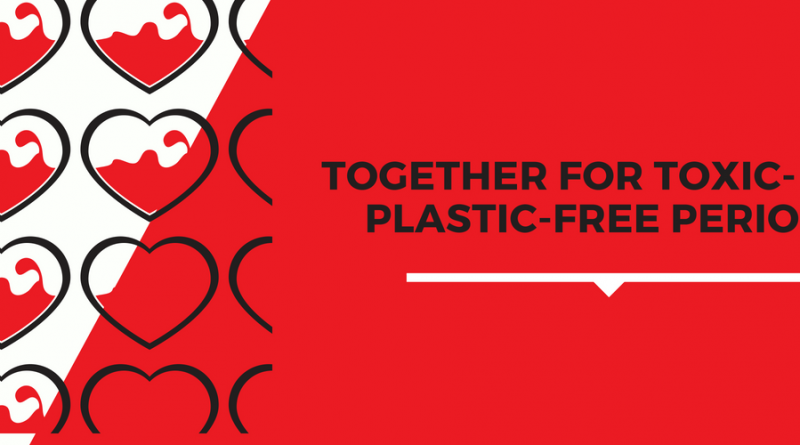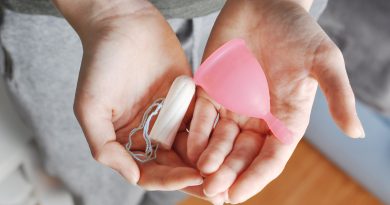Fighting global plastic pollution: What difference can women make?
By Olga Speranskaya, HEJSupport Co-Director
The first things I saw while doing my early morning jogging on the beach of the gorgeous Issyk-Kul Lake were plastic bottles and used women’s hygienic pads. Located in the northern Tian Shan mountains, Issyk-Kul is the largest lake in Kyrgyzstan. It is an amazingly beautiful lake with slightly salted clean water that never freezes. Despite being known for its many resorts, spas, and tourist sights, Issyk-Kul nevertheless suffers from plastic pollution. Plastics contaminate beaches, deep waters and the bottom of the lake. Plastic waste enters the lake from both terrestrial sources as well the 118 rivers and streams that flow into the lake. Issyk-Kul has no current outlet, thus what comes into the lake stays there.
In August 2018 a draft law “On the ban of import, production, sale and use of plastic bags and plastic containers within the territory of Issyk-Kul biosphere zone” was submitted for public consultations in Kyrgyzstan. The objective of the law is to ban the import, production, sale and use of plastic bags and plastic bottles starting in 2020.
Though this is an important step to protect Issyk-Kul, it will not address the issue of used personal hygienic products (pads, wipes, tampons, applicators and others) getting into the lake. Women’s hygiene products are among the most common garbage found on the beach. This is not a surprise when considering the sheer numbers of these products disposed of each day.
The average woman will use 12,000 to 16,000 disposable feminine hygiene products in her lifetime. According to City to Sea UK, “Every single day in the UK about 700,000 panty liners, 2.5 million tampons and 1.4 million pads are flushed down the toilet – many of which block our sewer systems and escape into rivers and seas”. Unfortunately, this issue is not isolated to the UK, with similar problems occurring nearly worldwide.
Noting that early puberty is becoming more frequent in our days, the use of feminine hygiene products will be skyrocketing in the near future. During a woman’s fertile years, period-related garbage makes about 0.5% of her “personal landfill load”. This is comparable to the percentage of the annual trash made out of plastic plates and cups.
Conventional hygienic products do not appear rotten even after long periods in water or under the sun, primarily because they are made from up to 90% crude oil-sourced plastic. It can take up to 100 years or more for a plastic pad or an applicator to break down.
While plastic bottles and containers can often be recycled, hygienic products are considered to be single-use, non-value plastic products which are subject to quick disposal. They end up in incinerators, landfills, illegal dumping grounds, water sources, seas and oceans. They can not be composted or repurposed into new products. Waste pickers avoid collecting this type of garbage as it is disgusting and of no use to them.
The multi-billion-dollar industry that manufactures feminine and other hygienic products profits from the dominance of disposable products. In both developing and developed countries, the feminine hygiene industry has successfully convinced women that their period is something which should be kept hidden and related hygienic products should be quickly disposed of. They have succeeded in making consumers believe that disposables are not only the most convenient and affordable option, but also have no health or environmental risks. However, this is not true.
Women regularly use many different personal hygienic products including creams, sprays, wipes, pads, and tampons. Environmental Working Group (EWG) detected 16 chemicals from 4 chemical families – phthalates, triclosan, parabens – in blood and urine samples from 20 teen girls aged 14-19. These and other chemicals are commonly used in cosmetics and personal care products causing serious and sometimes irreversible health damage. Endocrine disrupting chemicals (EDCs) such as BPA and BPS are indicated in the majority of tested personal care products and are linked to numerous diseases. They can cause cancer, mutations, neurological disorders, infertility, diabetes, obesity. Chlorine bleach that makes hygienic products look white can create dioxin which is a persistent organic pollutant and is linked to cancer and reproductive disorders. Young teenage girls often use personal care products on a daily basis, thus permanently exposing themselves to this wide variety of toxic chemicals.
Additionally, fragrances in hygienic and personal care products often contain undisclosed chemicals of unknown toxicity. Chemicals in fragrances are linked to allergies, cancer and endocrine disruption. A vast range of hazardous pesticides, including organochlorine pesticides and glyphosate, have been found in tampons and pads.
Sometimes it is difficult to determine if a direct health effect or acute poisoning is attributable to toxic chemicals in hygienic products or cosmetics. However severe health consequences resulting from toxic chemicals in personal care products could become obvious after many years. Even small doses of some chemicals such as endocrine disruptors (EDCs) could be very dangerous “because EDCs can have effects at low doses that are not predicted by effects at higher doses”.
Though there is a growing body of evidence confirming the presence of toxic chemicals in feminine hygiene products, manufacturing companies are not legally required to disclose all of the ingredients in their products because of the gaps in the national regulations and related international instruments. According to a report released by Women’s Voices for the Earth in 2018, laboratory analysis of six popular brands of U.S. tampons identified chemicals of concern in the majority of samples tested. For example, carbon disulfide was found in all tampons that contain rayon. This chemical has been associated with an increased risk of menstrual disorders, early menopause, and hormonal disturbances in female workers in rayon manufacturing plants.
In addition to carbon disulfide, other toxic substances, including methylene chloride, methyl ethyl ketone, ethyl acetate, m,p-xylene, heptane, hexane, toluene were detected in the testing. However, none were mentioned in the list of product ingredients, which clearly highlights the need for better ingredient disclosure for feminine hygienic products. The combination of a lack of clear labeling on disposable products and the potential for cumulative exposure to harmful chemicals creates a troubling situation, since feminine hygiene products are used by women on a monthly basis.
In order to address these issues, it is important to change corporate behavior, including promoting better alternatives for personal hygienic products. Dismantling taboos surrounding menstruation is key to both empowering women to lead healthier lives with plastic- and toxic-free alternatives, and to rid the environment of single-use non-value plastic products. By transitioning to plastic free periods, women will significantly contribute to both the overall reduction of plastic production and plastic waste.



